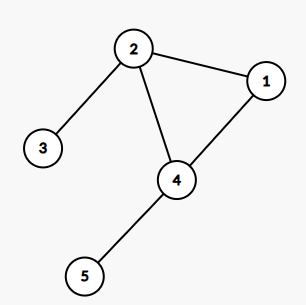H. Critical Network Connections
View as PDFA company has a network of servers, numbered
to
. These servers are linked through two-way direct
connections, ensuring seamless communication across the network. The stability of these connections is vital for the company's. The connections are bidirectional - this means if server
can directly communicate with server
, then server
can also directly communicate with server
.
A critical connection is a link between two servers where, if this connection fails or becomes unavailable, the network becomes disconnected. This means that there will be at least two servers that can no longer communicate with each other, either directly or through other servers.
Your task is to identify whether there are critical connections in the network.
Input
- The first line contains two integers
and
- the number of servers and connections, respectively.
- The next
lines describe the connections. Each line contains two integers
- representing a direct connection between server
and server
.
Output
- Print YES if there exists at least one if at least one critical connection exists, otherwise print NO.
Sample
Sample Input 1
5 5
1 2
2 4
4 1
2 3
4 5Sample Output 1
YESNotes
In the sample testcase,

The figure above represents a network with severs (nodes) and
connections (edges).
- If the connection between location
and
is removed, The network becomes disconnected.
- Similarly, removing the connection between
and
. Therefore, the answer is YES.
Comments